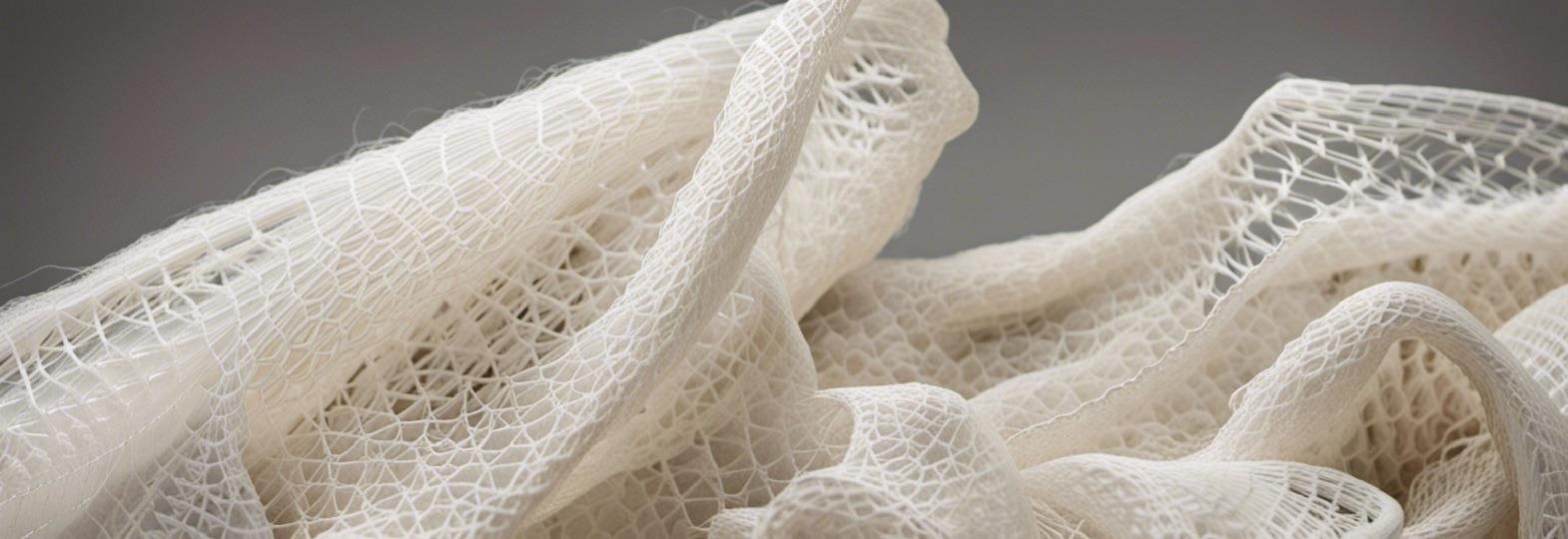Innovation in the textile industry continues to push boundaries, revolutionising the way we think about fabrics. Fabric trends are constantly evolving, driven by a combination of fashion, technology, sustainability, and consumer preferences. Keeping up with the latest trends in fabrics is crucial for designers, manufacturers, and anyone involved in the textile industry. From sustainable materials to cutting-edge technologies, the future of fabrics holds exciting potential.
Sustainable Materials and Production
As environmental concerns gain prominence, the demand for sustainable fabrics is on the rise. These textiles are produced in an environmentally and socially responsible manner, considering the entire lifecycle of the product. It involves reducing the negative impacts on the environment, conserving resources, and promoting fair labour practices. Here are some key aspects of sustainable textile production:
a. Use of eco-friendly materials: Sustainable textile production emphasises the use of natural and organic fibres such as organic cotton, hemp, linen, and bamboo. These materials are grown without the use of harmful chemicals, pesticides, or genetic modifications.
b. Recycling and upcycling: Recycling and upcycling techniques are employed to reduce waste in textile production. This involves reusing materials, such as old garments or fabric scraps, to create new textiles or products. Additionally, post-consumer textile recycling allows discarded textiles to be processed and turned into new fibres or materials.
c. Water and energy efficiency: Sustainable textile production aims to minimise water consumption and energy use throughout the production process. Technologies like water recycling systems, low-water dyeing techniques, and energy-efficient machinery help reduce the industry’s environmental impact.
d. Responsible chemical usage: Harmful chemicals used in textile production, such as dyes, bleaches, and finishing agents, can have adverse effects on the environment and workers’ health. Sustainable practices involve using safer alternatives, adopting non-toxic dyes, and implementing proper waste management systems to mitigate chemical pollution.
e. Fair labour practices: Ensuring fair and safe working conditions for textile workers is an essential aspect of sustainable production. This includes providing fair wages, reasonable working hours, and access to social protection. It also involves promoting gender equality, preventing child labour, and supporting workers’ rights.
f. Supply chain transparency: Sustainable textile production emphasises transparency and traceability throughout the supply chain. This involves knowing and disclosing the origins of materials, manufacturing processes, and the conditions under which products are produced. Certification schemes like GOTS (Global Organic Textile Standard) and Fair Trade provide assurance of sustainable and ethical practices.
g. Extended product lifespan: Encouraging durability, repairability, and recyclability of textiles helps to extend their lifespan and reduce waste. Designing products that can be easily repaired or repurposed, promoting circular business models, and educating consumers about responsible garment care—all contribute to sustainable textile production.
These practices collectively aim to minimise the environmental footprint of textile production, conserve resources, reduce waste, and promote social responsibility. By adopting sustainable approaches, the textile industry can contribute to a more sustainable and circular economy.
Smart Fabrics and Wearable Technology
The integration of technology with textiles is transforming the concept of fashion. Smart fabrics, also known as e-textiles, are embedded with electronic components or conductive fibres, enabling them to interact with the wearer and their environment. These fabrics can monitor vital signs, track movement, adjust temperature, and even charge electronic devices. Here are some key aspects of smart fabrics and wearable technology:
a. Embedded electronics: Smart fabrics incorporate tiny electronic components such as microcontrollers, sensors, and actuators directly into the fabric itself. These components are often flexible and lightweight, allowing the fabric to maintain its comfort and flexibility.
b. Sensors and data collection: Fabrics can include various types of sensors that can monitor a range of data, such as heart rate, body temperature, movement, or environmental conditions. These sensors collect data in real-time and transmit it to a connected device or an accompanying wearable device.
c. Connectivity and communication: Many smart fabrics and wearable technologies have built-in connectivity capabilities, such as Bluetooth or Wi-Fi, enabling them to communicate with other devices like smartphones or computers. This connectivity allows for data transmission, software updates, and control of the smart fabric’s functions.
d. Health and fitness tracking: Wearable technology, such as smartwatches or fitness bands, often incorporates smart fabrics to monitor various health metrics like heart rate, sleep patterns, or steps taken. These fabrics provide a comfortable and unobtrusive way to collect biometric data.
e. Fashion and style: These fabrics are designed to be fashionable and blend seamlessly into everyday clothing. They can be used to create interactive garments, accessories, or even entire collections that incorporate technology while still maintaining aesthetics.
f. Energy and power: Powering smart fabrics and wearable technology is a significant consideration. Integration of rechargeable batteries, energy harvesting techniques (like solar or kinetic energy), or wireless charging methods allows these devices to operate without the need for frequent battery replacements.
g. Applications: Smart fabrics and wearable technology have a wide range of applications. Some common examples include fitness tracking, healthcare monitoring, sports performance analysis, virtual reality gaming suits, augmented reality clothing, smart shoes, and safety-enhancing garments for industrial workers or emergency responders.
The field of smart fabrics and wearable technology is continuously evolving, with ongoing research and development pushing the boundaries of what is possible. As technology advances, we can expect to see even more innovative and exciting applications of these technologies in the future.
Customisation and Personalisation
In the era of mass production, consumers are increasingly seeking uniqueness and individuality. The future of fabrics lies in customisation and personalisation. Technology, such as 3D printing, allows designers and individuals to create bespoke textiles tailored to their preferences.
With advancements in digital printing techniques, it is now possible to print intricate designs, patterns, and even photographs directly onto fabric. Customisation is not limited to aesthetics; fabrics can be engineered to specific requirements, such as moisture-wicking properties, antimicrobial finishes, or UV protection.
Biodegradable and Regenerative Textiles
Addressing the issue of textile waste, the future will witness a surge in biodegradable and regenerative textiles. Biodegradable fabrics are designed to break down naturally over time, reducing environmental impact. Materials like algae-based fibres, pineapple leaf fibres (Pinatex), and mycelium (mushroom) leather are gaining attention as sustainable alternatives.
These fabrics are innovative materials that aim to address the environmental impact of traditional textiles and are designed to minimise waste and pollution throughout their lifecycle, from production to disposal.
Biodegradable fabrics can be derived from plant-based fibres such as organic cotton, linen, hemp, or bamboo. These materials are grown without the use of harmful pesticides or synthetic fertilisers, making them more environmentally friendly. When biodegradable fabrics are disposed of, either through composting or natural decomposition, they return to the earth without leaving behind harmful residues.
Regenerative fabrics go a step further by not only being biodegradable but also contributing to the restoration and improvement of ecosystems. These fabrics are typically made from fibres sourced from regenerative agriculture, which focuses on building healthy soil and sequestering carbon. Regenerative agriculture practices help to enhance biodiversity, improve soil quality, and reduce water consumption. By using fabrics derived from regenerative agriculture, we can support sustainable farming practices and reduce the environmental footprint of the textile industry.
In addition to the choice of materials, the production process of these fabrics is also important. Manufacturers use eco-friendly techniques that minimise energy consumption, water usage, and chemical waste. They may employ methods such as low-impact dyeing, water recycling, and waste reduction strategies to ensure a more sustainable approach.
Both biodegradable and regenerative fabrics offer promising solutions to reduce the environmental impact of the textile industry. By choosing these materials, we can contribute to a more sustainable and circular economy, where textiles are produced, used, and disposed of in a way that is beneficial for the planet.
Ending Note
As we move towards a more conscious and technologically advanced era, fabrics are expected not only be beautiful and functional but also environmentally friendly and socially responsible. The combination of innovation and sustainability will empower individuals to express themselves through unique and eco-friendly textiles, creating a more vibrant and responsible fashion landscape.








Comments